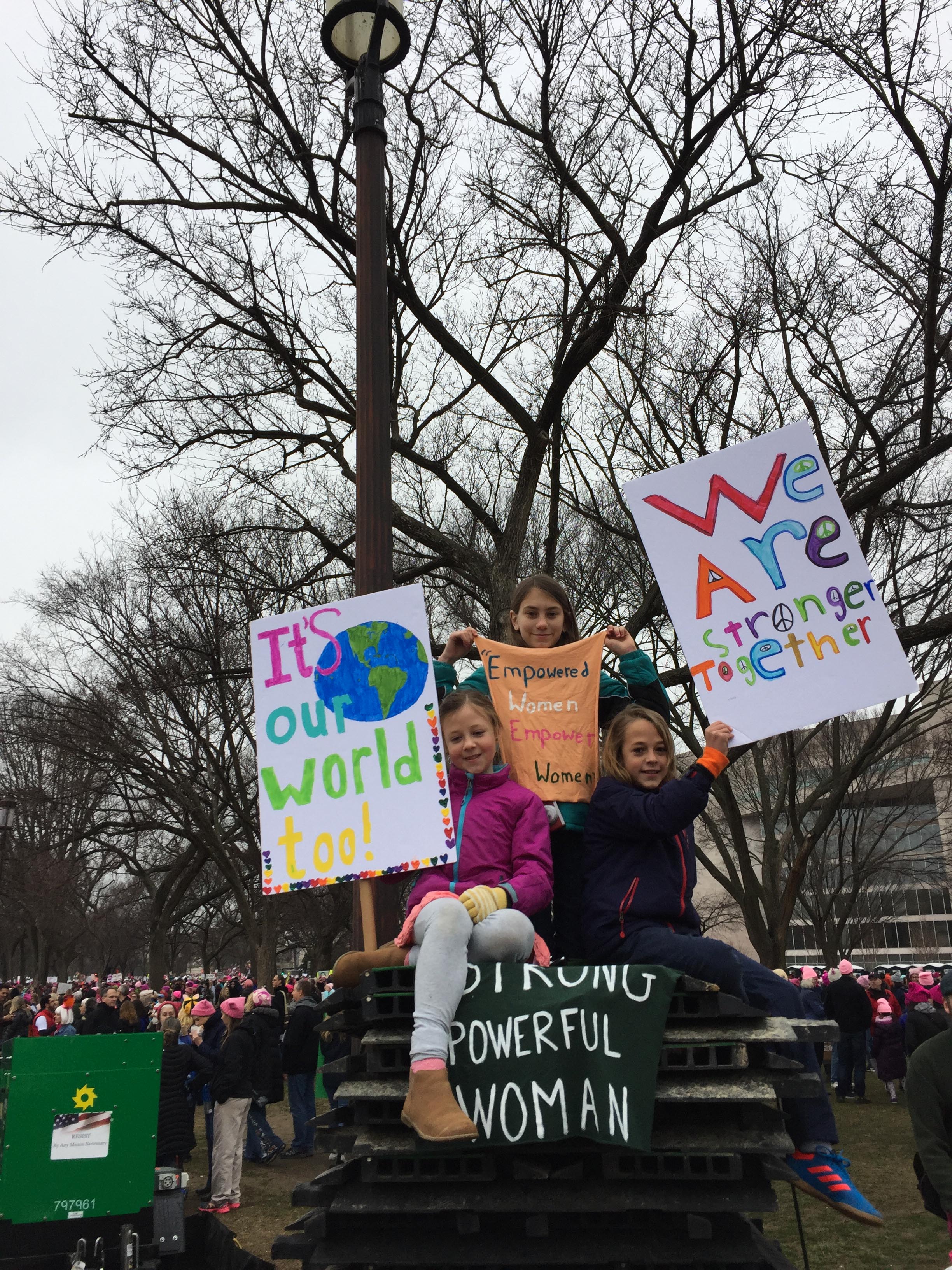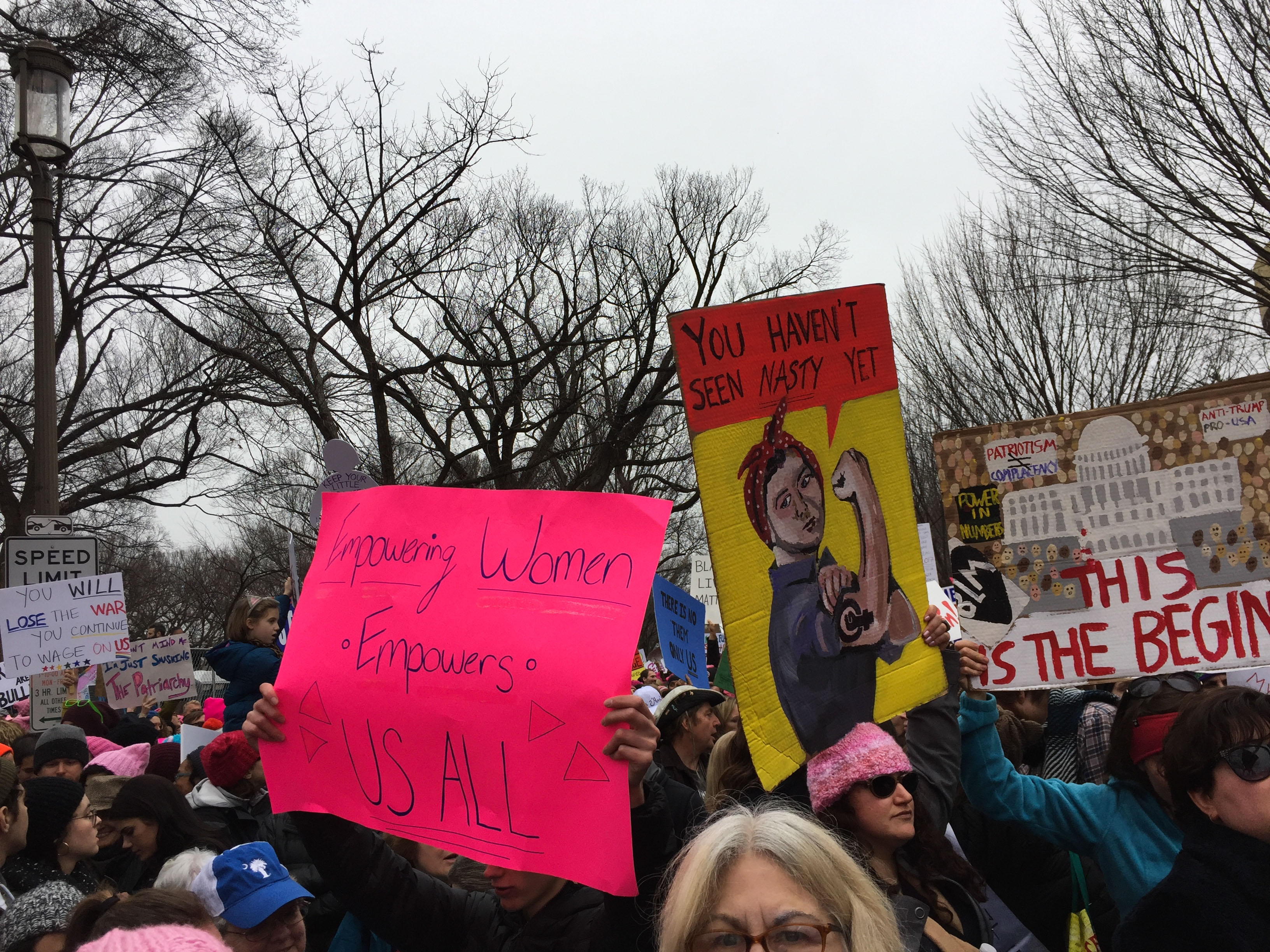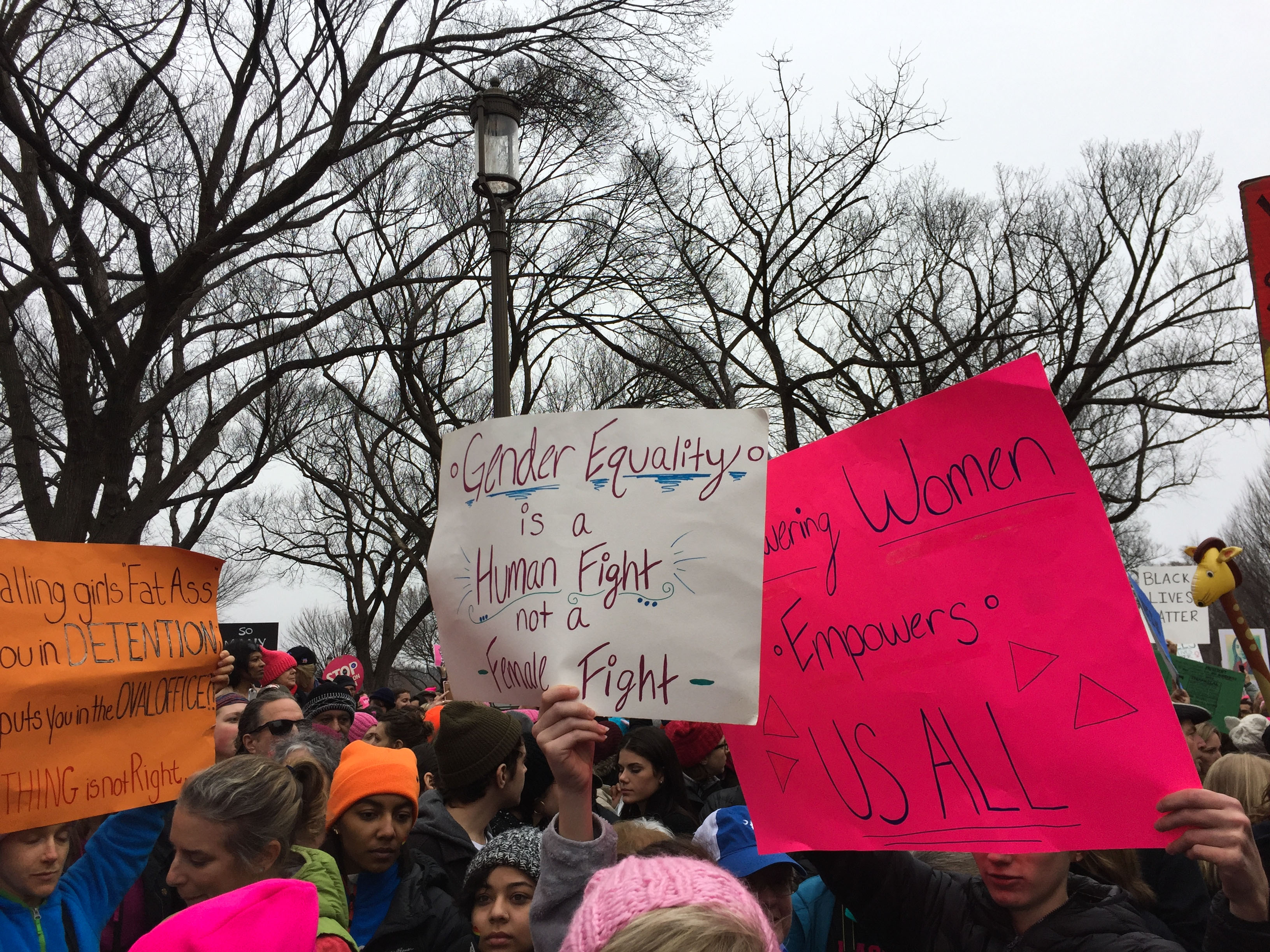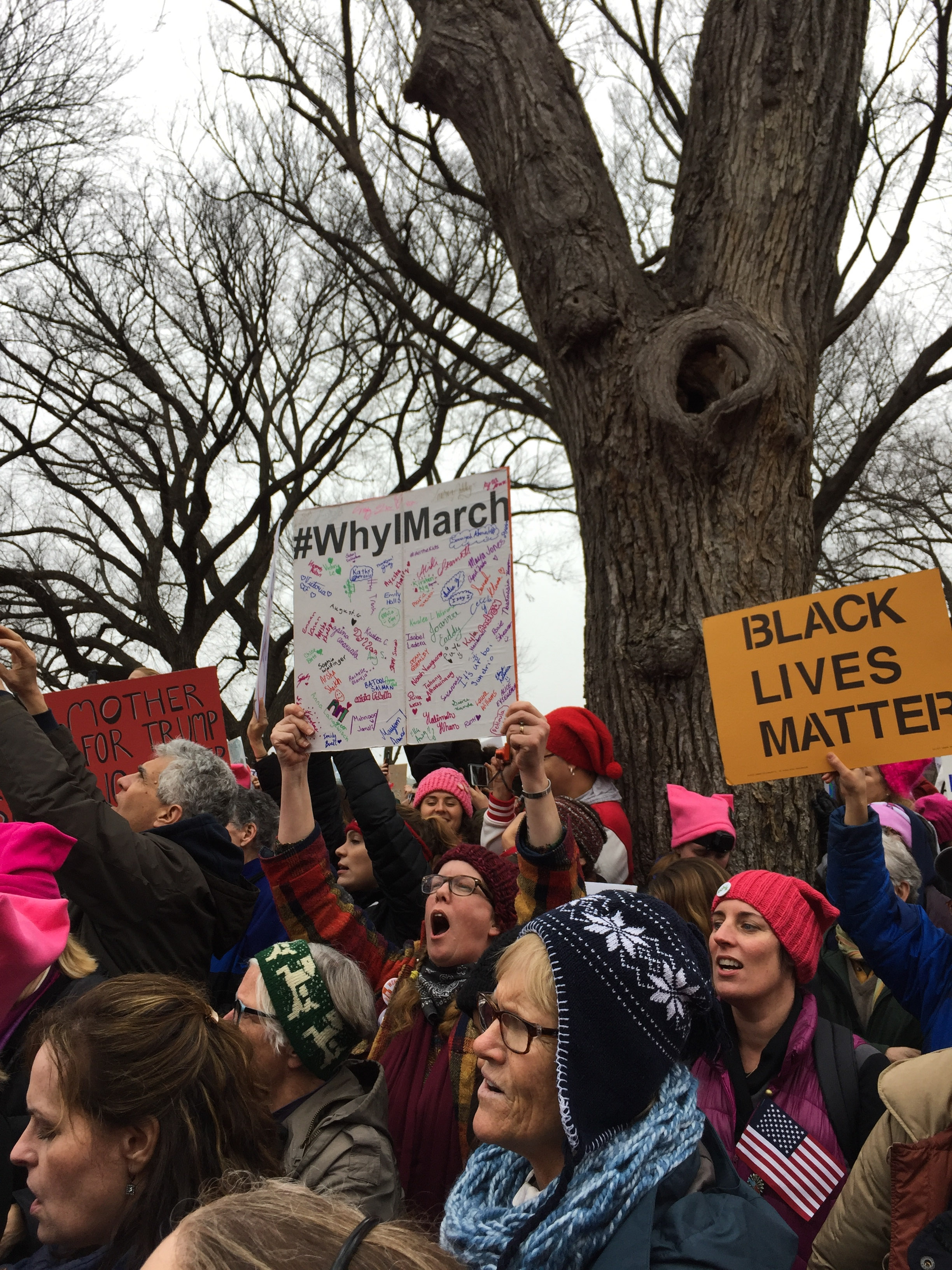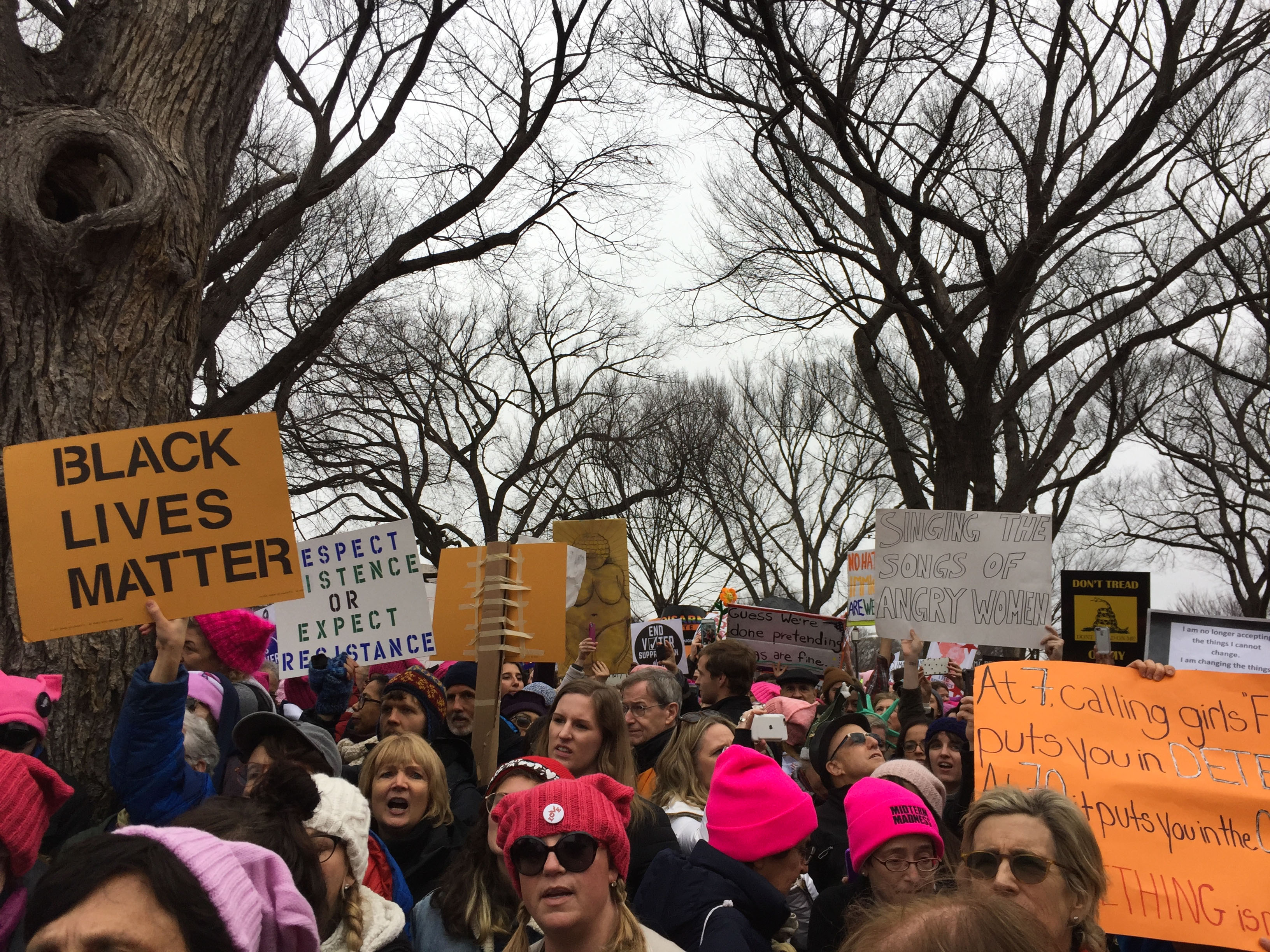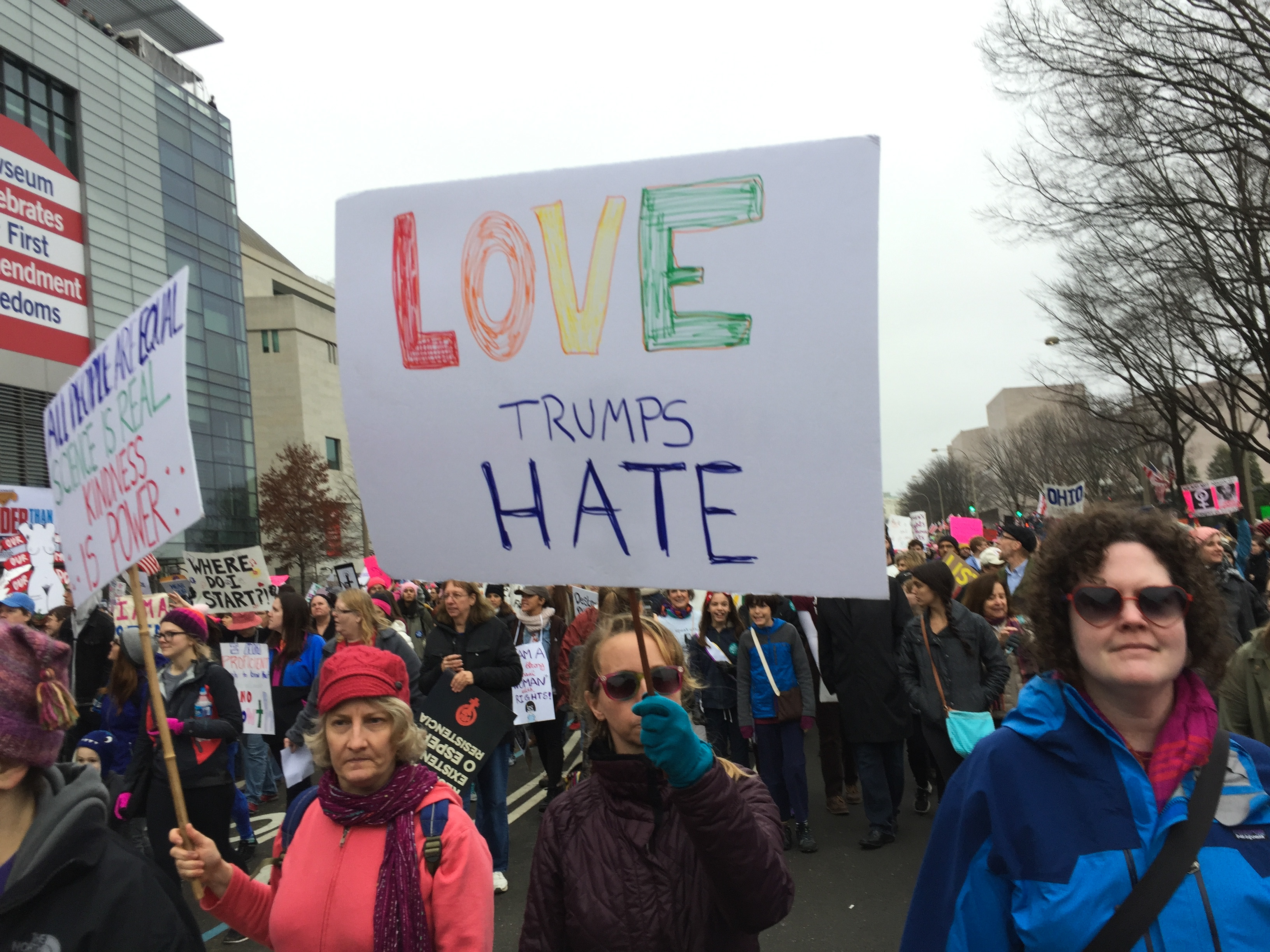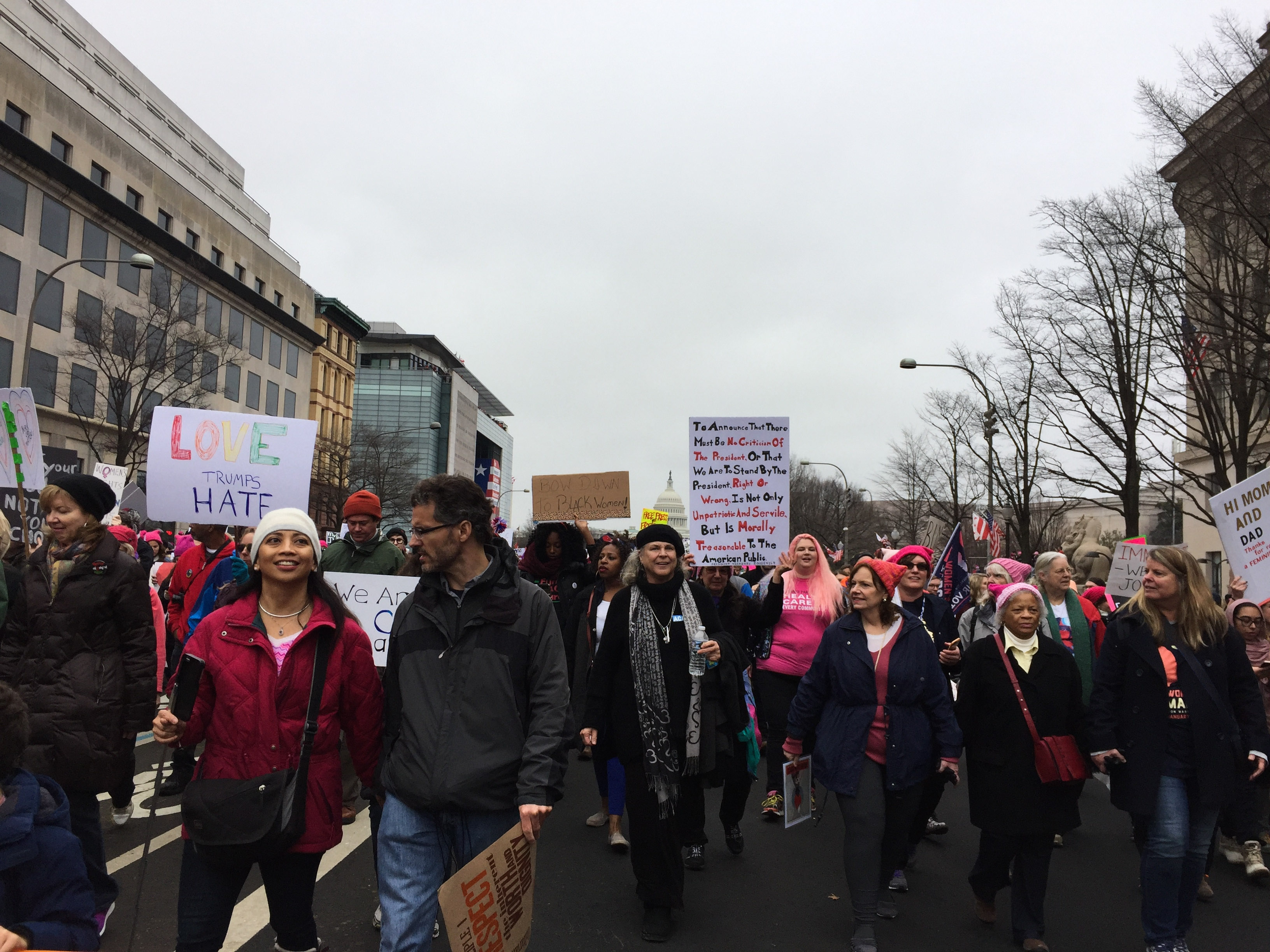My friend Alice Frederick described the feeling of Washington D.C. in the time between the inauguration and the Women’s March on Jan. 21 as tense.
“There are two groups,” she told me. “And they are marking themselves with different colored hats.”
Sure enough, as we waited for the Metro, we stood at a mostly empty station between a pack of older men wearing suits and “Make America Great Again” baseball caps and a group of women wearing pink “pussy hats.” They eyed each other suspiciously.
On the morning of the Women’s March, in contrast to the previous night, the Metro was packed, mostly with women wearing pink hats. DC’s metro system tweeted that at 11 a.m. on Jan. 21, there were 275,000 rides, while on Inauguration Day by that time, there had been only 193,000. Several University students who went to the March thought the massive attendance was something to celebrate.
“There were a lot of people and it shows that it’s pretty mainstream that people hate him,” said Sophie Massey ’15.
On the Metro, I overheard a woman say to her friend, “We are all here for good reasons.” Yet many online, including Wesleyan students, have questioned the truth of this, asking why white women were willing to come out in droves now that a political figure is threatening their rights, when they did little to address issues faced by trans* women, women of color, immigrant women, and Muslim women long before the rise of Donald Trump. A picture of a man holding a sign saying, “I’ll see you nice white ladies at the next #Black Lives Matter March right?” and others like it have been widely circulated online, along with critiques of white feminism and trans-exclusive feminism as they were displayed at the march.
Many of the speeches given at a rally before the march addressed these very issues, including that of Linda Sarsour, director of the Arab American Association of New York and National Co-Chair of the Women’s March.
“The very things you were outraged by during this election season, the Muslim registry program, the banning of the Muslims, the dehumanization of the communities that I come from, that has been our reality for the past 15 years,” she said in her speech. “Sisters and brothers, if you have come here today as your first time at a march, I welcome you. I ask you to stand and continue to keep your voices loud, for black women, for native women, for undocumented women, for our LGBTQI community, for people with disabilities.”
Senator Kamala Harris attempted to broaden the definition of women’s issues.
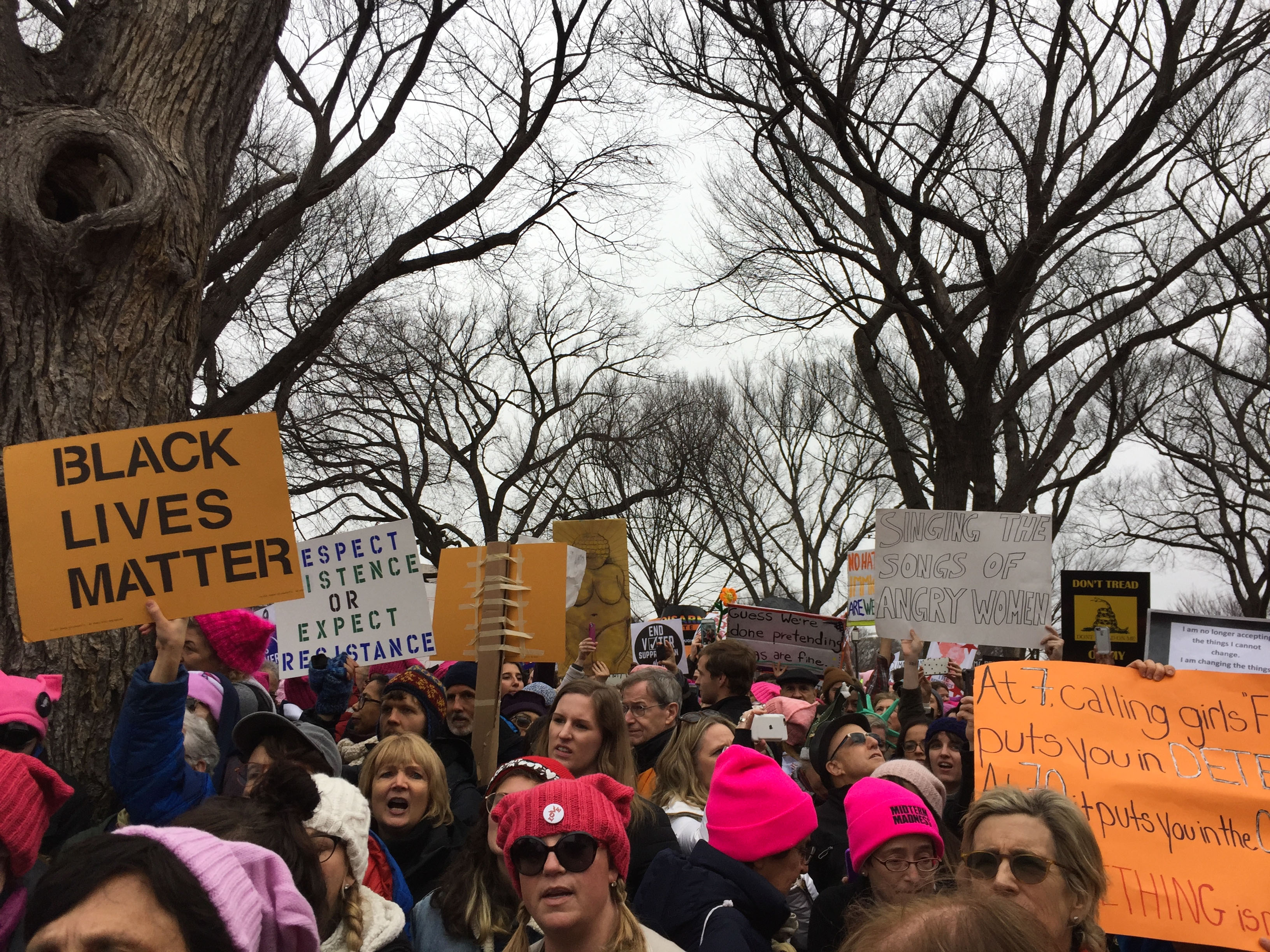
c/o Vivienne Eng, Assistant Arts Editor
“If you are an immigrant woman trying to keep your family together, you know immigration is a woman’s issue,” she said. “If you are a black woman trying to raise a son, you know Black Lives Matter is a woman’s issue.”
University students expressed a similar desire to focus attention on issues other than those faced by cis white women. Alexandra Bacchus ’17 thought the march was an appropriate venue to do so.
“Personally, as a black woman, the march represented an opportunity to show white women the facets of feminism that are so often ignored,” she recalled. “It’s not just about being pro-choice or achieving equal pay for equal work, but about being valued by society the same way a white woman is and recognizing that for every right we lack as a collective, there are women who are immigrants, refugees, minorities, trans* women, etc. who have it much, much harder.”
Although she had many positive things to say about her experience at the march, and at times felt a sense of community, there were moments where she found the crowd’s behavior to be less encouraging.
“I felt extremely uncomfortable when the crowd disrespected Janelle Monae and the Mothers of the Movement who lost their sons to police/prison brutality,” she said. “Many people, including myself, wanted to begin marching because there was a palpable loss of momentum after so many hours of speakers; however, instead of sucking it up and continuing to pay attention, crowds of mostly white women and men started to chant ‘March! March! March!’ when new speakers were brought up. This type of behavior was distressing to see, especially when the crowd was prompted to yell the names of the Mothers’ slain children to show them that we still care about them.”
Despite this, Bacchus added, “I had an overall wonderful time there and my experience was mostly positive.”
Other Wesleyan students chose not to attend the march in anticipation of there being a lack of respect for or emphasis on trans* women and women of color.
“The amount of casual transmisogyny did not make this a safe space for trans women, with so much of the dialogue centered around vaginas and uteruses,” explained Delilah Seligman ’16. “Pink hats do not represent all women, as not all women have vaginas nor are all vaginas pink.”
At the march, I too noticed a focus on uteri, vaginas, and breasts. There were countless signs with slogans like “Grow a pair,” and drawings of breasts, or uteri with one of the fallopian tubes twisting up and bearing a hand giving the middle finger. Many of the signs were also satirical, and similarly, humorous chants, along the lines of “we need a leader not a creepy tweeter” or “pussy grabs back” were the norm. This, as well as the mild police presence, contributed to an atmosphere that Tatiana Ettensberg ’18 described as occasionally being more like a music festival than a protest.
Similarly, Avigayl Sharp ’17 posted on Facebook, “If there are food trucks at a protest something has gone very wrong.”
Seligman and others have attributed the police’s cooperation and comparatively unthreatening presence to the perceived whiteness of the March’s organization.
“It was mostly white women who marched, considering that the state-sanctioned response was that of peaceful monitoring and allegiance, and yet when black women march, they are placed under immense scrutiny and violence,” pointed out Seligman.
Of course, it is possible to critique something without dismissing it entirely, and most agreed that the march could be a positive step in the struggle against Donald Trump.
“This march is a powerful step forward and taking a step way from the issues I’ve talked about, it’s incredible to see so many people be politically active that’s never been seen before,” Seligman said. “People are pissed, and they’re ready to fight. If we can reach a place where we’re fighting for everyone and not just a select few, then we’ll really be doing well.”
-
Ralphiec88
-
Pamela Radamaker
